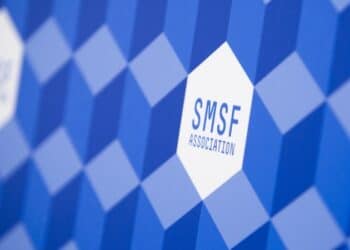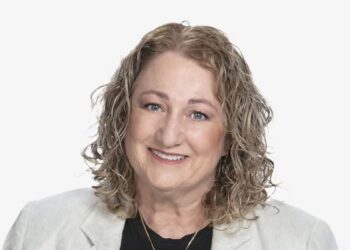Matthew Burgess, director of View Legal, said the decision in Boyd v Roberts [2024] NSWSC 1310, stated that while the court confirmed the assets of the SMSF could have been used to satisfy a successful challenge against the estate, it was considered inappropriate and instead other non-estate assets were used to make the required payments to the aggrieved beneficiary.
“Arguably the leading decision in this regard is the case of Benz v Armstrong; Benz v Armstrong; Benz v Armstrong [2022] NSWSC 534,” Burgess said.
This case involved a situation where the personal assets of the deceased that would have passed to children from his first marriage under the will were negligible, and the application of the notional estate provisions instead created a pool of available assets worth around $18 million.
“While the second wife of the deceased, who would have otherwise received all wealth, retained more than half of the assets, four adult children from the first relationship received amounts of $1 million (two children) and $2 million (2 children),” he said.
“It should be noted that one child appears to have secured their payment by calling in a credit loan owed by a family trust (controlled by the deceased) that was held to be repayable on demand.”
He continued that the allocations to the adult children were despite the fact that the court concluded that all children had a relatively privileged childhood and that none had dire financial or medical issues.
“The ability for the courts in NSW to access superannuation entitlements ‘by stealth’ under the notional estate regime does not automatically mean, however, that SMSF assets will be treated in a manner that is contrary to the wishes of the deceased member,” Burgess said.
In Boyd v Roberts [2024] NSWSC 1310, the court heard of the sudden death of both the deceased and his first wife.
“The deceased’s only child – a daughter from the deceased’s first marriage – was successful in securing $450,000 (with payment of $100,000 deferred for 12 months) sourced from bank accounts in the sole name of the second wife,” Burgess said.
“The accounts had been held as joint tenants with the deceased, meaning that at law she became the sole owner by the rule of survivorship. The bank accounts were held to form part of the deceased’s notional estate, which was valued at around $2 million.”
Furthermore, Burgess said, the deceased’s personal estate had no assets, so if not for the NSW notional estate regime, the daughter would not have received anything on her father’s death.
“In its decision to ignore the assets held via an SMSF for the purposes of the notional estate determination, the court confirmed that the trust deed for the relevant SMSF, and likely most SMSF trust deeds, provided a general power to distribute capital and income of the fund to a range of persons including the deceased (prior to death) and the second spouse, who was the sole controller of the SMSF following the death of the deceased,” Burgess said.
“It also determined that the SMSF, with its sole asset being a residential property, was held to be an important component of a stable financial future for the second wife, providing future capital growth and present income within a ‘low tax superannuation environment’.”
Burgess said if the SMSF was held to be part of the notional estate, it would have practically forced the sale of the SMSF’s only asset, which the court saw as unacceptable.
“It reasoned that the second wife’s long-term financial welfare was best served by preserving her superannuation to its maximum extent, given that superannuation is a tax-sheltered environment from which she can earn income to fund her retirement. That was her and the deceased’s plan and it was a good one,” he said.
“The court also noted that the property market was accepted as being not at its best and therefore it was not a good time to force a sale of the property and the corporate trustee for the SMSF had not been joined as a party to the proceedings.”
Although the court noted that while this was not a major obstacle given the second wife, who was a party to the proceedings, was the controller of the corporate entity, it was a complication that could be avoided.
“Interestingly, the court accepted the advice of the accountant for the SMSF, that while he had previously prepared a binding death benefit nomination in favour of the second spouse, this had lapsed prior to death ‘by operation of law, as it is required to be renewed every three years’,” Burgess said.
He added that since the decision in Hill v Zuda Pty Ltd [2022] HCA 2, most SMSF trust deeds reflect the position at law that an SMSF may permit members to make death benefit nominations that are binding on the trustee. This applies whether or not circumstances accord with the rules in regulation 6.17A of the superannuation regulations, which imposes the three-year lapsing rule.
“In other words, it means that SMSFs with appropriately crafted deeds can permit non-lapsing BDBNs,” he said.
“Even though a non-lapsing BDBN may have still been subject to unwinding via the notional estate regime, given this is only relevant in NSW, the accountant’s approach would likely be subject to far greater scrutiny in another jurisdiction. The risks in this regard are ones that advisers have received many warnings about in recent times.”
An example of this, Burgess said, was the decision of the Application by Ellasil Pty Ltd [2023] VSC 69, where the accountant to the SMSF allegedly failed to identify the fundamental issues that flowed from a lost SMSF trust deed until years after the problem could have been identified.
“In this case, the court heard that the accountant made no file notes of discussions in relation to a BDBN they drafted, nor were they able to provide more detail as to when the discussions occurred; had not considered whether preparing and issuing a BDBN amounted to legal advice; and failed to confirm whether each BDBN was valid in accordance with the trust deed for the SMSF, and in turn whether it was signed, dated and witnessed correctly.”


